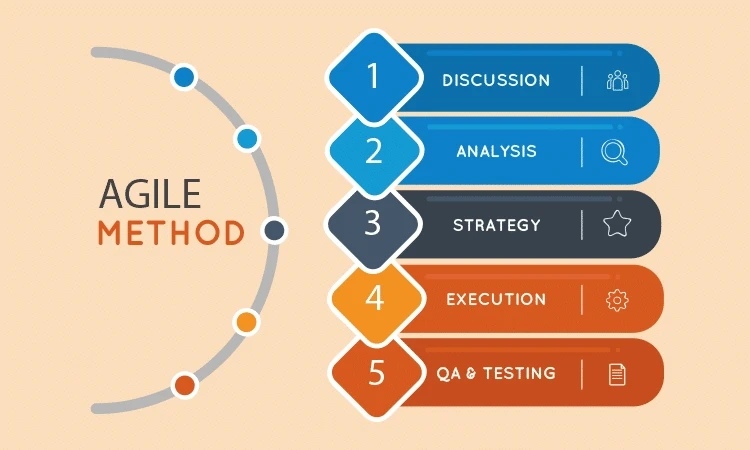In a rapidly evolving world, where change is the only constant, traditional project management methodologies often fall short. The need for flexibility, adaptability, and efficiency has led to the widespread adoption of Agile methodologies in various industries. This article delves into the world of Agile methodologies, providing a comprehensive understanding of their significance, principles, frameworks, and implementation.
- The Significance of Agile Methodologies
Agile methodologies are more than just project management approaches; they represent a mindset and a cultural shift in how teams work together. Their significance can be summarized in several key points:
1.1. Adaptability to Change
Agile methodologies are designed to embrace change. In an ever-evolving business environment, Agile allows teams to respond quickly and effectively to new requirements, market shifts, and customer feedback.
1.2. Improved Collaboration
Agile promotes collaboration among cross-functional teams, fostering better communication, and breaking down silos. It encourages team members to work closely together throughout the project.
1.3. Customer-Centricity
Agile places a strong emphasis on delivering value to the customer. By involving customers and end-users throughout the development process, Agile ensures that the final product meets their needs and expectations.
1.4. Efficiency and Transparency
Agile methodologies incorporate iterative processes, regular feedback loops, and clear visibility into project progress. This transparency and efficiency lead to more predictable and successful outcomes.
- The Principles of Agile Methodologies
Agile methodologies are built upon a set of guiding principles. While there are various frameworks that implement these principles, the core values remain consistent:
2.1. Individuals and Interactions Over Processes and Tools
Agile places a higher value on the human element. It recognizes that effective collaboration and communication between team members are the cornerstones of success.
2.2. Working Solutions Over Comprehensive Documentation
Agile encourages working on functional, deployable solutions rather than extensive documentation. While documentation is important, the focus should be on delivering value to the customer.
2.3. Customer Collaboration Over Contract Negotiation
Rather than adhering to rigid contracts, Agile methodologies emphasize collaboration with the customer. This ensures that the project aligns with customer needs and remains adaptable to changing requirements.
2.4. Responding to Change Over Following a Plan
Agile embraces change as a natural part of the development process. Instead of rigidly adhering to a pre-defined plan, Agile teams welcome change and adjust their strategies accordingly.
- Agile Frameworks and Methodologies
There are several popular Agile frameworks and methodologies, each with its unique approach to implementing Agile principles. Some of the most well-known ones include:
3.1. Scrum
Scrum is a widely used Agile framework that divides work into fixed-length iterations called "sprints." It promotes daily stand-up meetings, clear roles (Product Owner, Scrum Master, and Development Team), and continuous improvement.
3.2. Kanban
Kanban is a visual Agile methodology that uses boards and cards to manage work. It emphasizes workflow optimization, limiting work-in-progress, and visualizing the entire process to enhance efficiency.
3.3. Extreme Programming (XP)
Extreme Programming is a software development methodology that focuses on engineering practices. It emphasizes continuous integration, test-driven development, pair programming, and collective code ownership.
3.4. Lean Agile
Lean Agile methodologies, such as Lean Software Development, focus on reducing waste, optimizing processes, and delivering value to customers. Lean principles complement Agile practices.
3.5. DevOps
DevOps combines development (Dev) and operations (Ops) to automate and streamline the software delivery and deployment processes. While not a purely Agile methodology, DevOps principles align well with Agile values.
- Implementing Agile Methodologies
To implement Agile methodologies successfully, teams and organizations should follow key best practices:
4.1. Training and Education
Invest in Agile training and education for team members to ensure a shared understanding of Agile principles and practices.
4.2. Start Small
Consider implementing Agile in a small, pilot project before scaling it to larger initiatives.
4.3. Empower Teams
Trust and empower Agile teams to make decisions and manage their work independently.
4.4. Regular Feedback
Foster a culture of continuous improvement by soliciting feedback from team members and stakeholders.
4.5. Adapt and Evolve
Agile is not a one-size-fits-all solution. Adapt the chosen methodology to the specific needs and constraints of your organization.
Conclusion
Agile methodologies have revolutionized project management and development practices across industries. By prioritizing adaptability, collaboration, and customer-centricity, Agile empowers teams to deliver value efficiently and effectively.
While there are various Agile frameworks and methodologies to choose from, the key lies in understanding and adhering to Agile principles. Successful implementation requires commitment, open communication, and a willingness to embrace change. Mastering the art of Agile methodologies can drive innovation and ensure that projects remain aligned with evolving customer needs and market dynamics.



